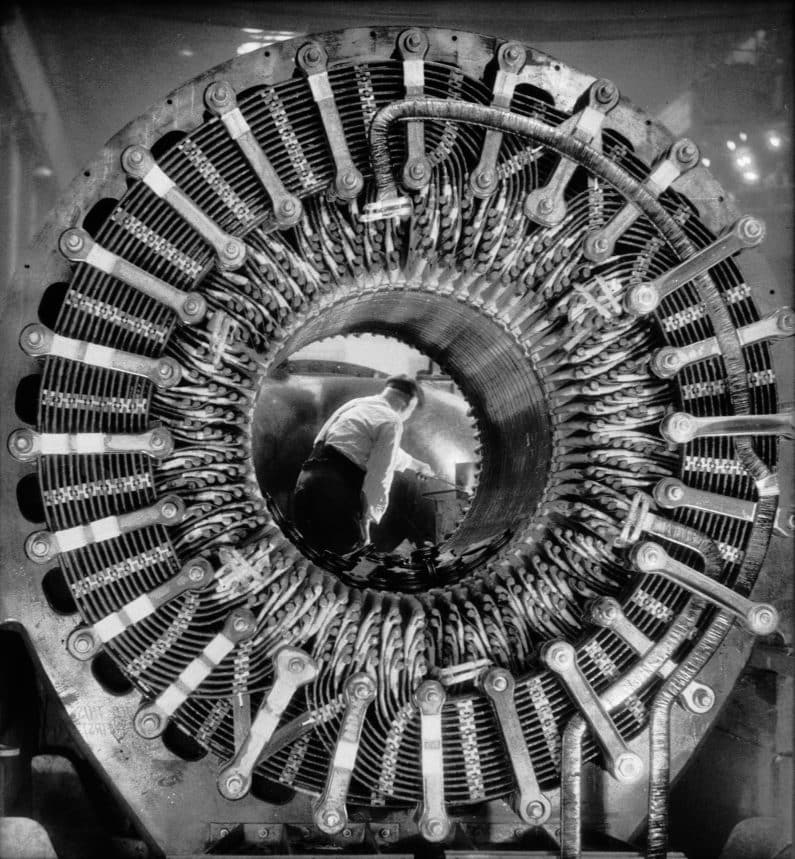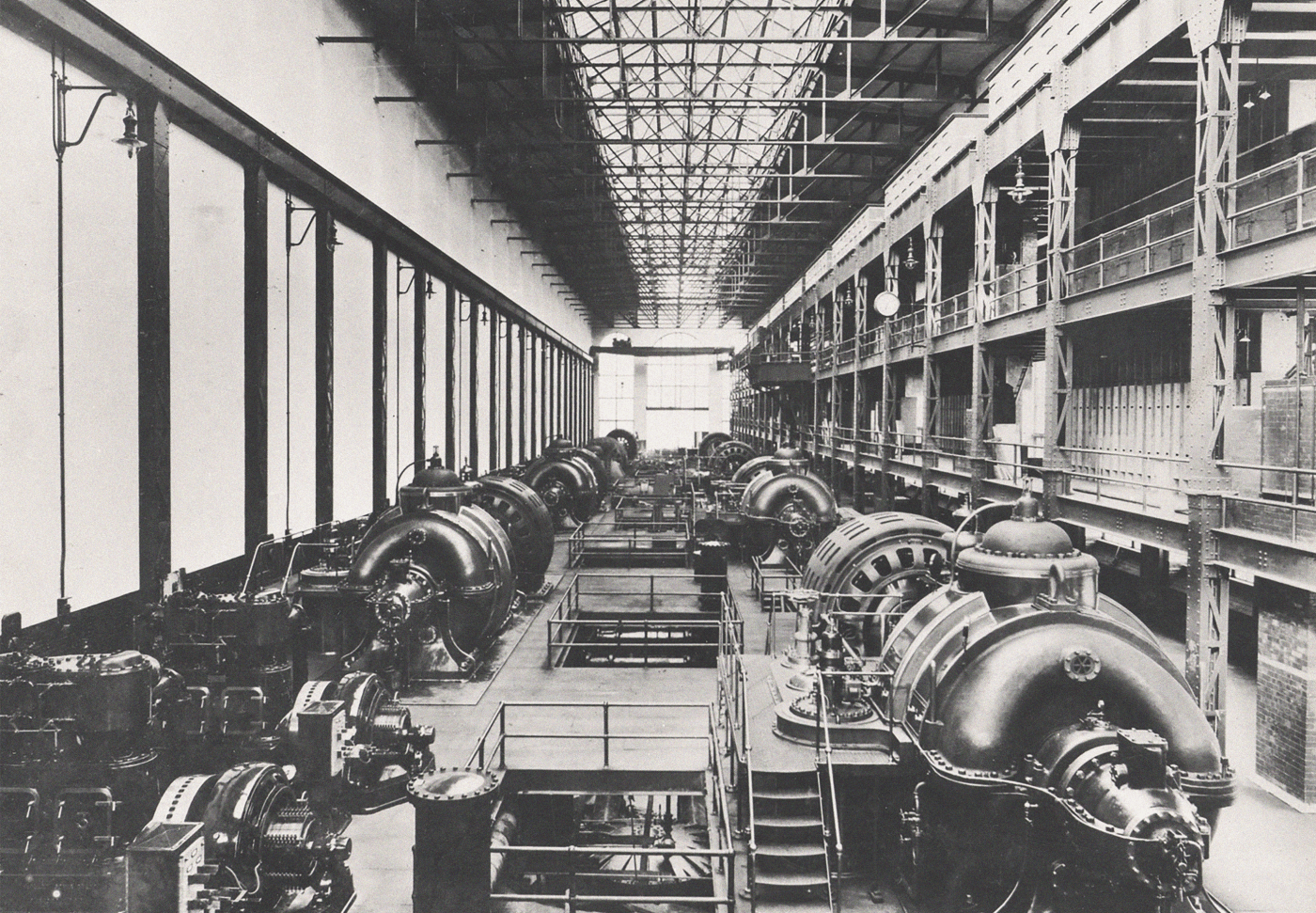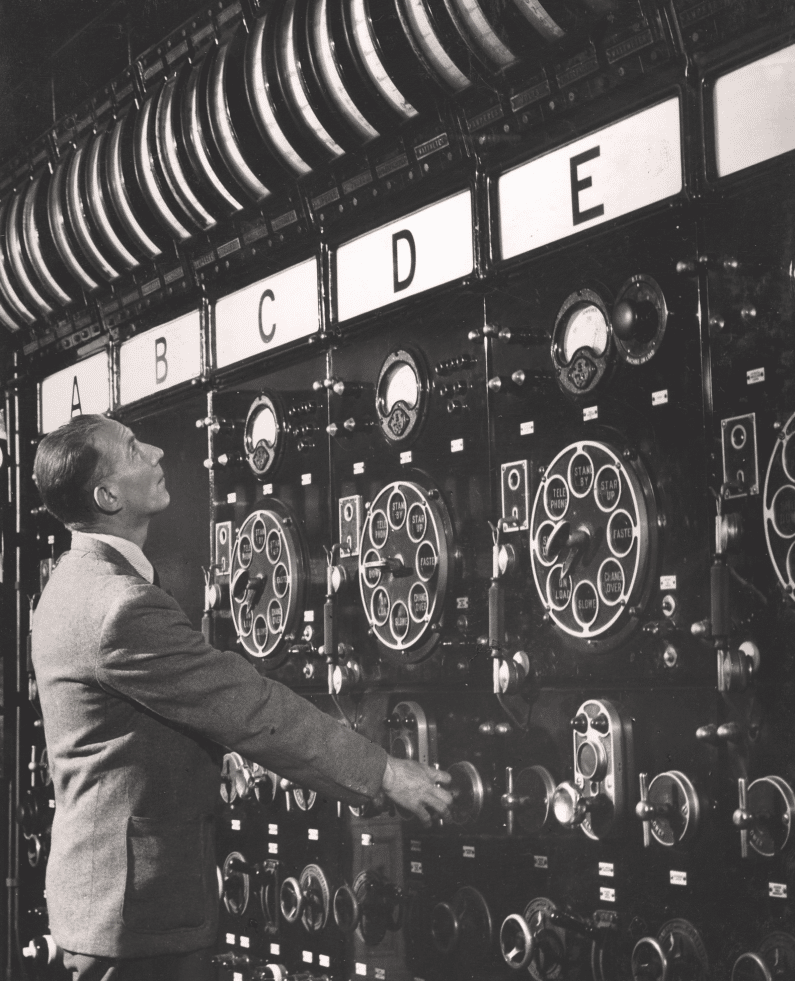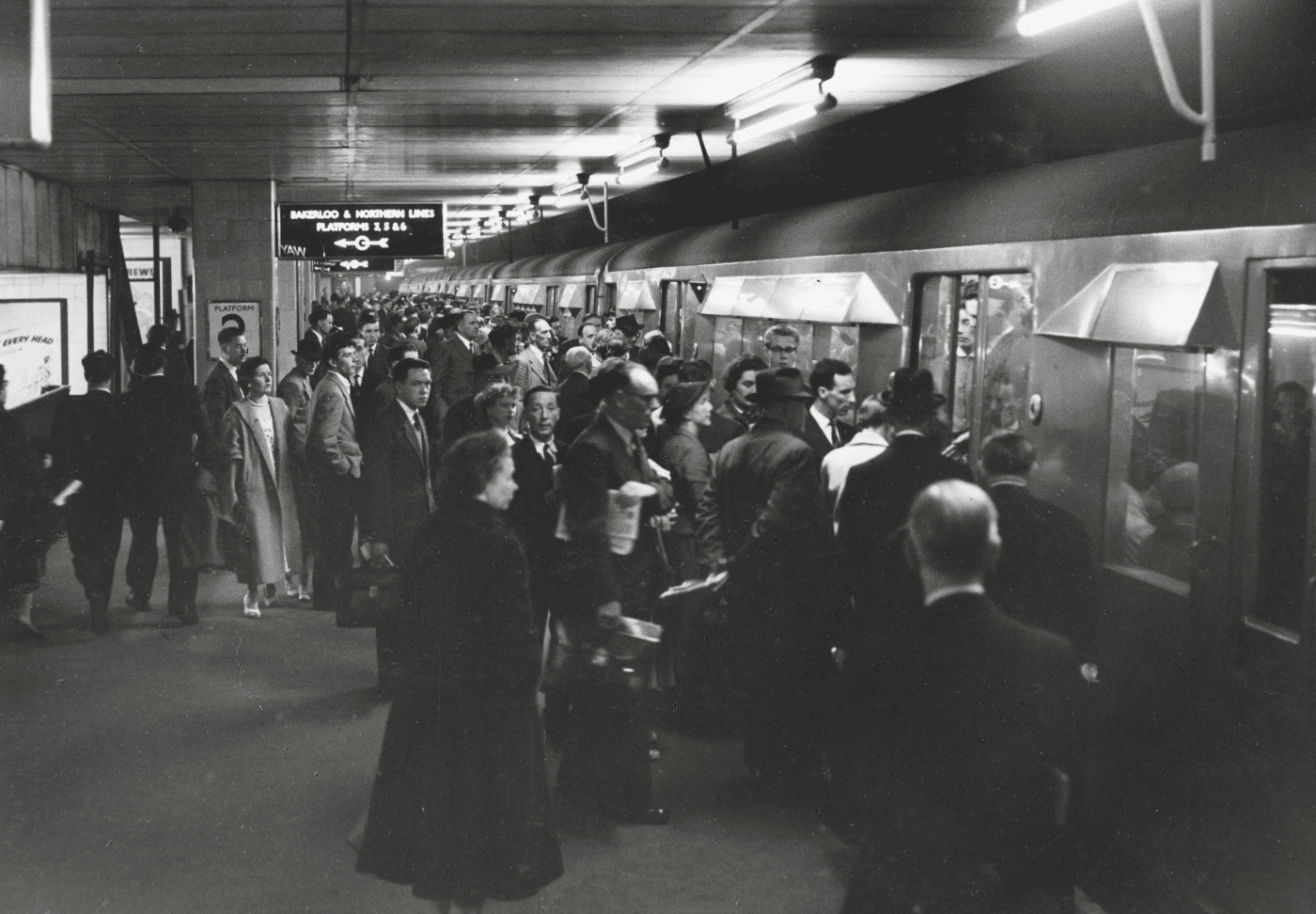A triumph of engineering, built on a scale never before seen, Lots Road Power Station was a cathedral of the industrial age, distinguished by its muscle and imposing architectural form.
洛兹路发电厂(Lots Road Power Station)见证建筑工程史上的辉煌成就,规模宏大前所未见,结构坚固、气势磅礡。
洛茲路發電廠(Lots Road Power Station)見證建築工程史上的輝煌成就,規模宏大前所未見,結構堅固、氣勢磅礡。
Lots Road Power Station wasn’t just a Chelsea landmark, it was the driving force behind the rapid expansion of modern London.
Designed by American engineer James Russell Chapman, Lots Road Power Station was a 20th-century architectural star. Its two halls were clad in rich red brick and framed by four towering chimneys – the tallest in Europe when built, soaring 275 feet over the river Thames below.
The building’s brick elevations were punctured by vast, elegant arched windows, allowing natural light to penetrate into the cavernous depths of the huge structure. A band of raised circles ran along the building, just under the roof line – a final architectural flourish, on what is now celebrated as a proto-modernist masterpiece.
Often described as the “design grandfather” of Battersea Power Station, Lots Road Power Station was one of the first steel-frame buildings in the British Isles, wrought from nearly 6,000 tonnes of steel. The station consumed a staggering 700 tonnes of coal each day, ferried by river barges.
For almost a century, Lots Road Power Station generated electricity to power London’s Underground network, keeping the capital moving even during the Blitz of the Second World War. It provided the essential fuel for the city to grow into the thriving metropolis it is today, fanning new networks of connections between people and places.
London Transport posters attest to the extraordinary role Lots Road Power Station has played in energising and uplifting the capital. One describes the station as “the moving spirit of London”, while another likens its formidable switchboard – which controlled 450,000 units of current each day – to “the modern Jupiter, hurling his lightning”.
洛兹路发电厂不仅是切尔西的地标,更是现代伦敦快速扩展的动力之源。
洛兹路发电厂由美国工程师 James Russell Chapman 设计,是二十世纪的星级建筑。发电厂楼高将近84米,两个大堂以红砖铺设,四座烟囱高耸而立,昂然雄踞于泰晤士河畔,
为当时欧洲最高建筑物。
建筑的砖砌外墙嵌入造型优雅的巨大拱形玻璃窗,引入自然光线穿透巨型建筑内部的每个角落。屋檐线下方一排圆形结构点缀着整座建筑, 是建筑设计的神来之笔,被誉为原始现代主义的杰作。
洛兹路发电厂常被形容为巴特西发电厂(Battersea Power Station)的“设计之源”,更是不列颠群岛最早期的钢结构建筑之一,由将近六千吨钢材组成。发电厂的燃煤发电能力惊人,每天可燃烧由驳船经泰晤士河运送的七百吨煤炭。
洛兹路发电厂为伦敦地铁系统供电将近一个世纪,即使在二战时期的“伦敦大轰炸”期间,仍然维持着首都的交通运作。它供应的动力成就伦敦发展成为今天的繁华大都会,更拉近人与人之间的地域界限。
伦敦运输局曾经发布海报,表彰洛兹路发电厂为提振伦敦发展作出了非凡贡献。发电厂也被喻为“伦敦的推动精神”,这座拥有超强配电设备的发电厂每天可提供四十五万伏电。
洛茲路發電廠不僅是切爾西的地標,更是現代倫敦快速擴展的動力之源。
洛茲路發電廠由美國工程師 James Russell Chapman 設計,是二十世紀的星級建築。發電廠樓高275尺,兩個大堂以紅磚舖設,四座煙囪高聳而立,昂然雄踞泰晤士河畔,為當時歐洲最高建築物。
建築的磚砌外牆嵌入造型優雅的巨大拱形玻璃窗,引入自然光線穿透巨型建築內部的每個角落。屋簷線下方一排圓形結構點綴整座建築, 是建築設計的神來之筆,被譽為原始現代主義的傑作。
洛茲路發電廠常被形容為巴特西發電廠(Battersea Power Station)的「設計之源」,更是英倫諸島其中一個最早期的鋼結構建築,由將近六千噸鋼材組成。發電廠燃煤發電能力驚人,每天可燃燒由駁船經泰晤士河運送的七百噸煤炭。
洛茲路發電廠為倫敦地鐵系統供電將近一個世紀,即使在二戰時期的「倫敦大轟炸」期間,仍然維持著首都的交通運作。它供應的動力成就倫敦發展成今天的繁華大都會,更拉近人與人之間的地域界限。
倫敦運輸局曾經發佈海報,表揚洛茲路發電廠為提振倫敦作出了非凡貢獻。發電廠亦被喻為「倫敦的推動精神」,這座擁有超強配電設備的發電廠每天可提供四十五萬伏電。


One of the most historic and iconic London landmarks, and the last of the city’s three power stations to be redeveloped, Lots Road Power Station was born of a noble purpose to power the movement of a growing population. An extraordinary place, once alive with industry and buzzing with invention, now stirs back into life, realising its destiny as an even more extraordinary place to live – an exclusive residential address with a proud historic past.
作为伦敦最具历史价值的地标之一,也是伦敦三座发电厂中最后一座被活化的建筑,原旨是为人口渐增的城市提供活力。这座已完成历史重任的雄伟建筑,昔日随着工业与技术的发展而风光无限;如今活化成卓尔不凡的时尚居所, 一座承载光辉历史的珍罕府邸。
作為倫敦其中一個最具歷史價值的地標,也是倫敦三座發電廠中最後一座被活化的建築,原旨是為人口漸增的城市提供活力。這座已完成歷史重任的雄偉建築,昔日隨著工業與技術的發展而風光無限;如今活化成卓爾不凡的時尚居所, 一座承載光輝歷史的珍罕府邸。


